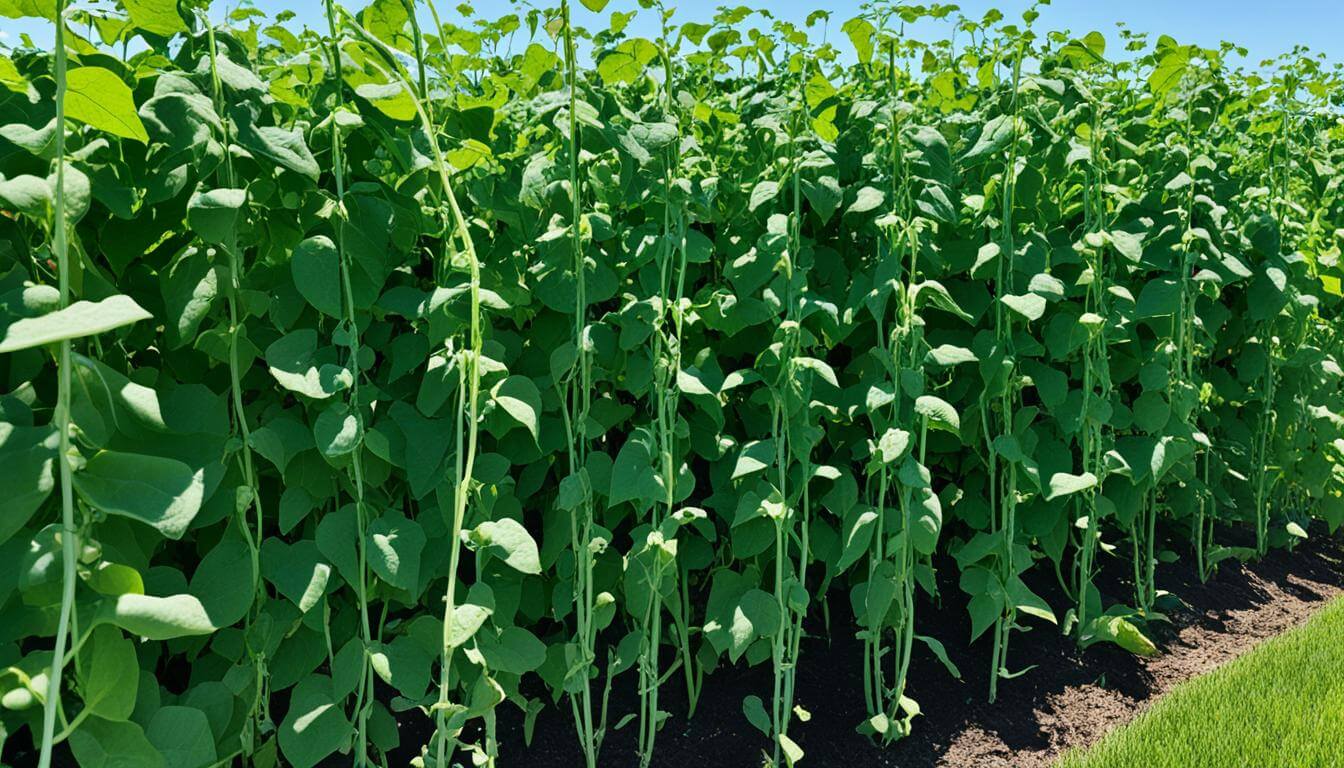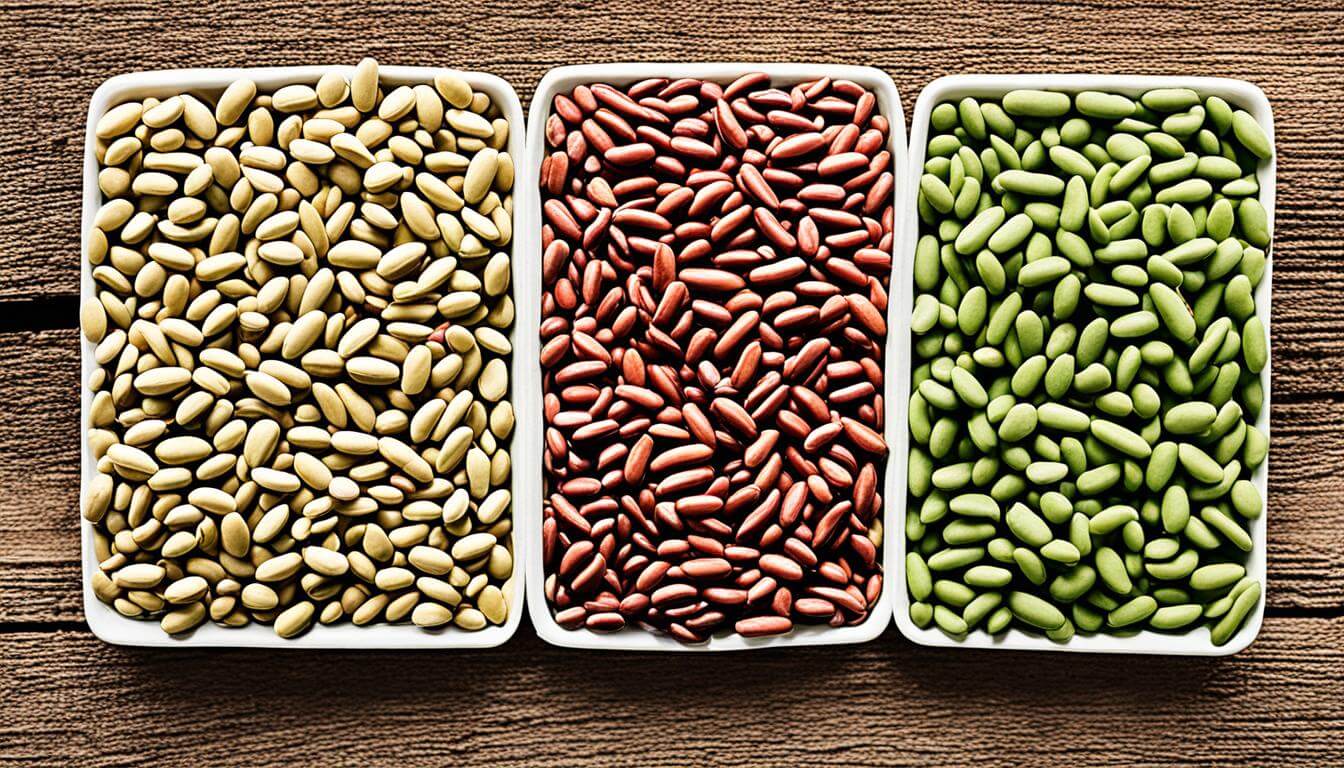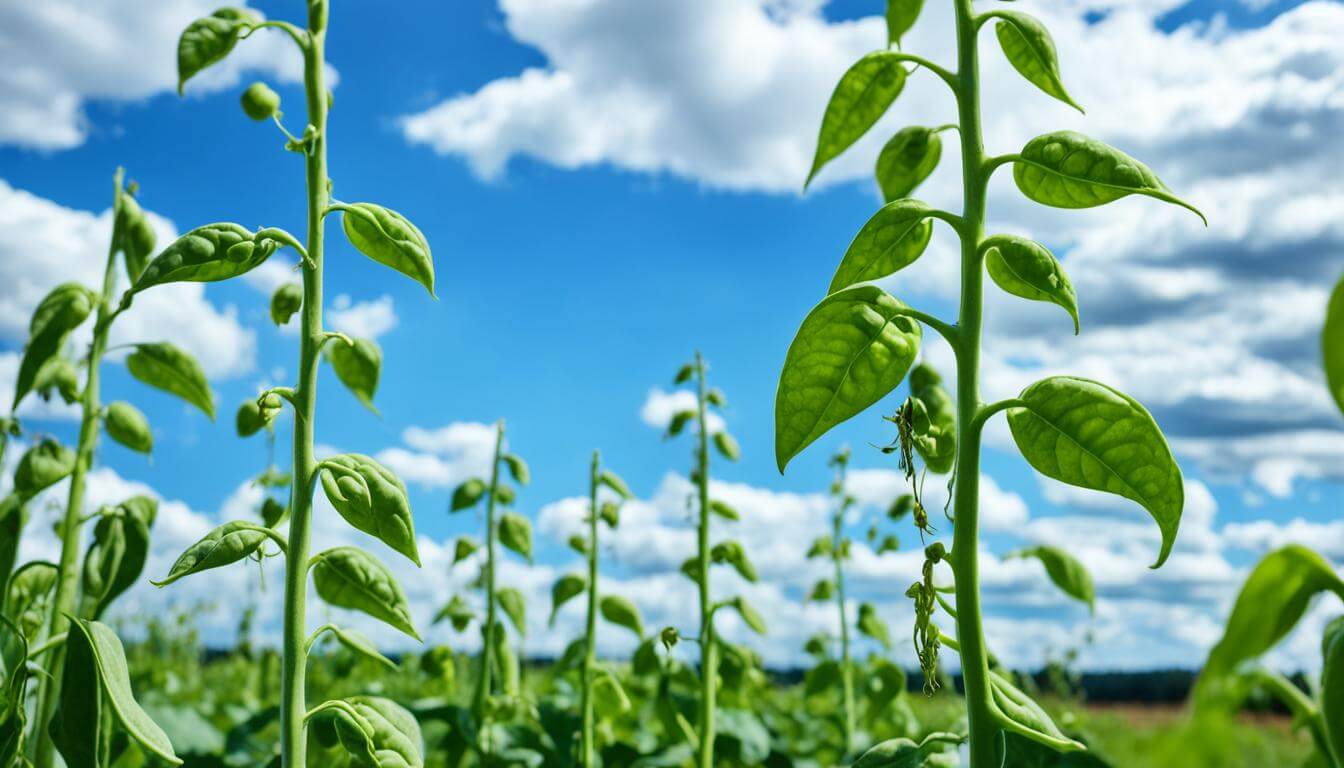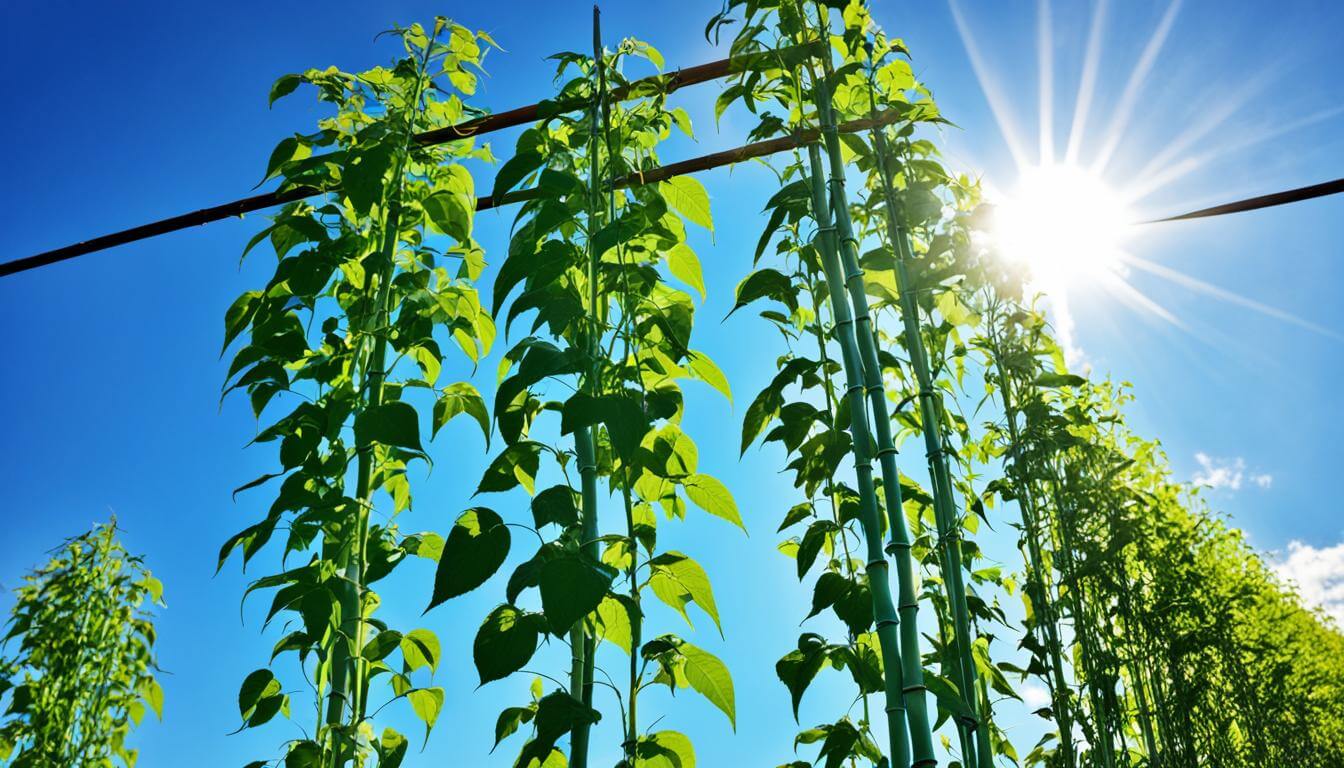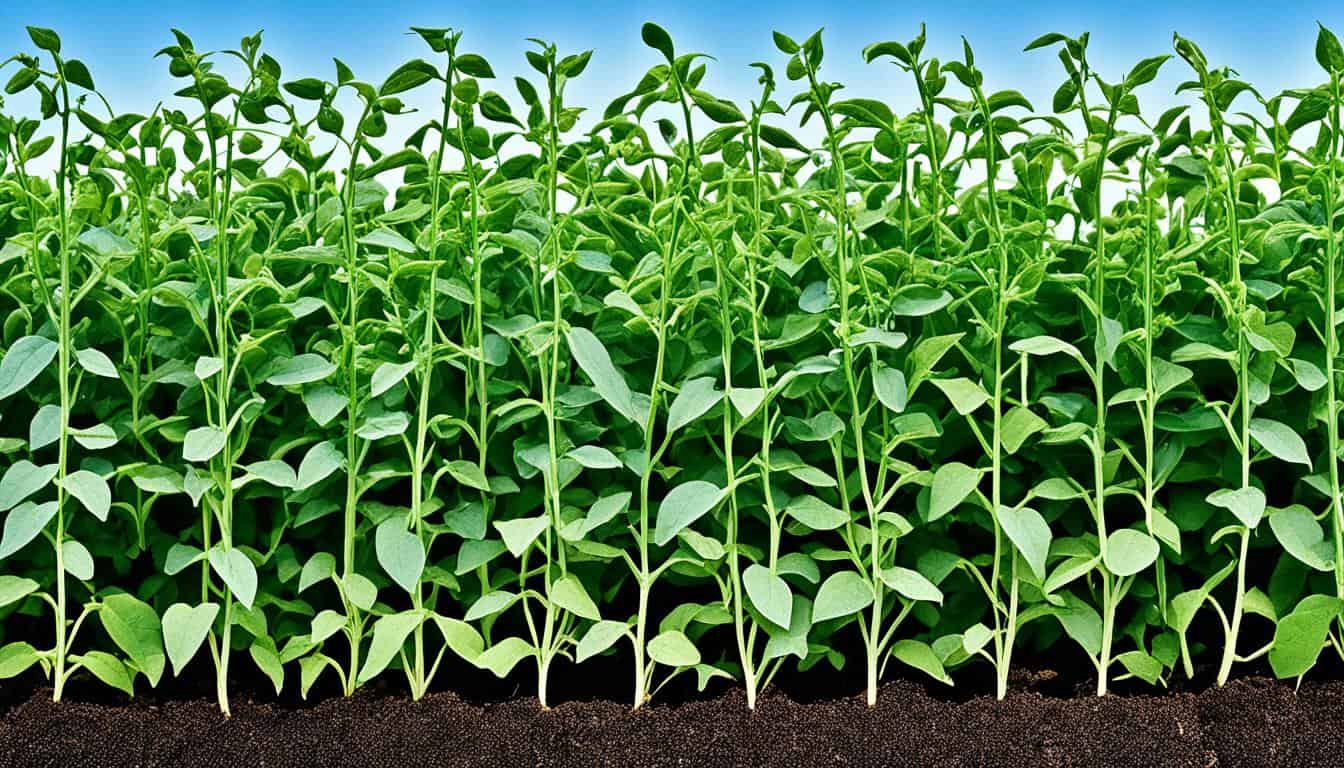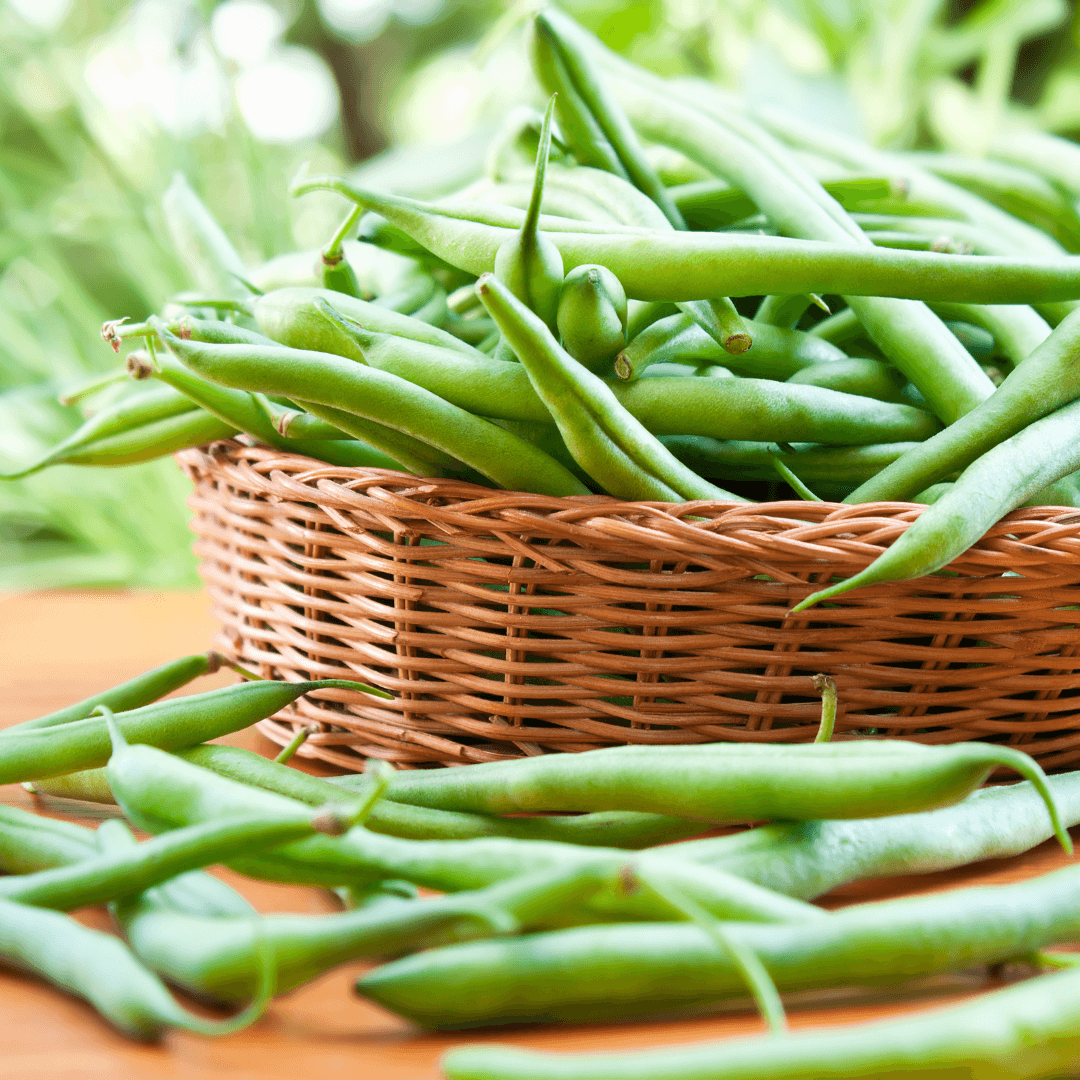When it comes to growing Contender Beans, one burning question often perplexes gardeners: are Contender Beans bush or pole varieties? The answer may surprise you.
In this article, I will delve into Contender Beans and shed light on their growth habits, support requirements, and the best techniques for cultivating these popular bean plants. Whether you're a seasoned gardener or a beginner, understanding the key differences between bush and pole beans will help you make informed choices for your vegetable garden.
Understanding Bush Beans and Pole Beans
Two popular options often come up for cultivating beans: bush beans and pole beans. Both varieties have their unique characteristics and offer distinct advantages for home gardeners. This section will explain the key differences between bush and pole beans, including their growth habits, support requirements, and harvesting methods.
Bush Contender Bean Seeds
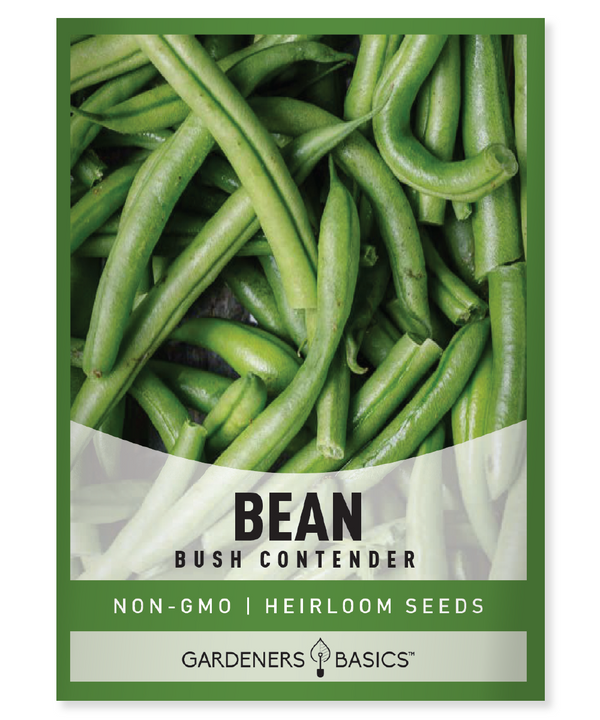
$2.49
Bush Contender Bean Seeds – Heirloom, Non-GMO, Non-Hybrid, Open-Pollinated – Fast-Growing & Easy to Cultivate! Discover the perfect addition to your vegetable garden with Bush Contender Bean Seeds, an heirloom variety celebrated for its reliability, high yield, and versatility. These… read more
Growth Habits
Bush beans are known for their compact and bushy growth habit. They typically grow to about 1-2 feet and do not require any support structures. This makes them an excellent choice for small gardens or container planting. On the other hand, pole beans are vigorous climbers, reaching heights of up to 6-10 feet. These beans require trellises, stakes, or other structures for support.
Support Requirements
As mentioned earlier, bush beans do not need any support structures as they naturally have a compact growth habit. This makes them easier to maintain and harvest. Pole beans, however, need sturdy trellises or stakes to climb on. This vertical growth maximizes space utilization and facilitates better air circulation and sunlight exposure for the plants.
Harvesting Methods
Harvesting bush beans is straightforward as they produce their pods near the ground. This makes spotting and picking the ripe beans easy without bending or stretching. Pole beans, on the other hand, require a bit more effort when harvesting. The beans tend to grow higher off the ground on the climbing vines, usually requiring a ladder or step stool to reach them.
| Bush Beans | Pole Beans | |
|---|---|---|
| Growth Habit | Compact and bushy | Climbing vines |
| Support Requirements | N/A | Trellises or stakes |
| Harvesting Method | Close to the ground | Higher off the ground |
Now that you understand the differences between bush beans and pole beans, you can decide which variety best suits your garden space and personal preferences. Whether you opt for the compact and convenient bush beans or the vertical and space-saving pole beans, both varieties offer an abundance of delicious and nutritious beans for your culinary creations.
Contender Bean Varieties
When growing Contender Beans, home gardeners have several exciting varieties. Each variety offers unique characteristics and benefits, making it essential to understand the options available. Let's explore some popular contender bean varieties:
1. Contender Bush Beans
Contender Bush Beans are compact, bushy plants that thrive in smaller spaces, such as raised beds or containers. These beans do not require support structures, making them ideal for gardeners with limited space. With a maturity period of around 50-55 days, Contender Bush Beans produce high yields of tender, stringless pods. They are known for their disease resistance and are an excellent choice for beginners.
2. Contender Pole Beans
If you have a larger garden or want to maximize vertical space, Contender Pole Beans are a great option. These climbing vines require trellises or other support structures to grow properly. Pole beans have a longer maturity period, usually 60-80 days, but they offer a continuous harvest throughout the season. The tall vines produce abundant, flavorful pods and are an excellent choice for gardeners seeking an attractive visual element.
To help you visualize the differences between Contender Bush Beans and Contender Pole Beans, here's a table comparing their key characteristics:
| Characteristics | Contender Bush Beans | Contender Pole Beans |
|---|---|---|
| Plant Size | Compact and bushy | Vine-like and climbing |
| Support Structures | Not required | Require trellises or support |
| Maturity Period | Around 50-55 days | Usually 60-80 days |
| Harvest | High yields of tender, stringless pods | Continuous harvest throughout the season |
| Space Requirement | Thrives in smaller spaces | Requires vertical space |
As you can see, both Contender Bush Beans and Contender Pole Beans offer their advantages, depending on your garden space and personal preferences.
Quote
"I love growing Contender Beans in my garden. The bush variety is perfect for my patio garden, while the pole beans add a beautiful vertical element to my backyard. Plus, the flavor of fresh-picked Contender Beans is simply unmatched!" - Sarah, home gardener
With this information about the different contender bean varieties, you can now decide based on your garden space, preferences, and desired harvest. Whether you opt for compact bush beans or climbable pole beans, both varieties promise a bountiful yield of delicious, homegrown beans.
Growing Bush Beans
If you're considering growing bush beans in your garden, you're in for a rewarding experience. Bush beans are versatile, easy to grow, and packed with flavor. In this section, I will provide a step-by-step guide on successfully cultivating bush beans and exploring their unique characteristics.
Preparing the Soil
Before planting bush beans, it's crucial to prepare the soil properly. Start by choosing a sunny location in your garden with well-draining soil. Remove any weeds or debris and loosen the soil to a depth of at least 6 inches.
Planting Techniques
Bush beans can be directly sown into the garden once the soil has warmed up to around 60°F (15.5°C). Simply plant the seeds about 1 to 2 inches deep and 2 to 4 inches apart, leaving about 18 inches between rows.
Alternatively, you can start bush bean seeds indoors 2-3 weeks before the last frost date. Transplant the seedlings outdoors once the danger of frost has passed.
Watering and Maintenance
Water the bush beans regularly, aiming for about 1 inch of water per week. Make sure to water deeply to encourage strong root growth. Avoid soaking the plants, as this can lead to disease. Mulching around the plants can help retain moisture and suppress weeds.
As the bush beans grow, provide them with support by gently tying them to stakes or using a low trellis. This helps keep the plants upright and prevents the pods from touching the soil.
Disease Prevention
Preventing diseases is essential for successful bush bean cultivation. Here are a few tips to keep your plants healthy:
- Rotate crops annually to reduce the risk of soil-borne diseases.
- Avoid overhead watering to minimize leaf wetness and prevent fungal infections.
- Inspect plants regularly for signs of pests or diseases, such as aphids or powdery mildew. If detected, take appropriate measures to control the issue.
Following these steps and providing proper care, you'll enjoy a bountiful harvest of delicious bush beans.
Vegetable Seed Vault Kit | 35 Variety Pack
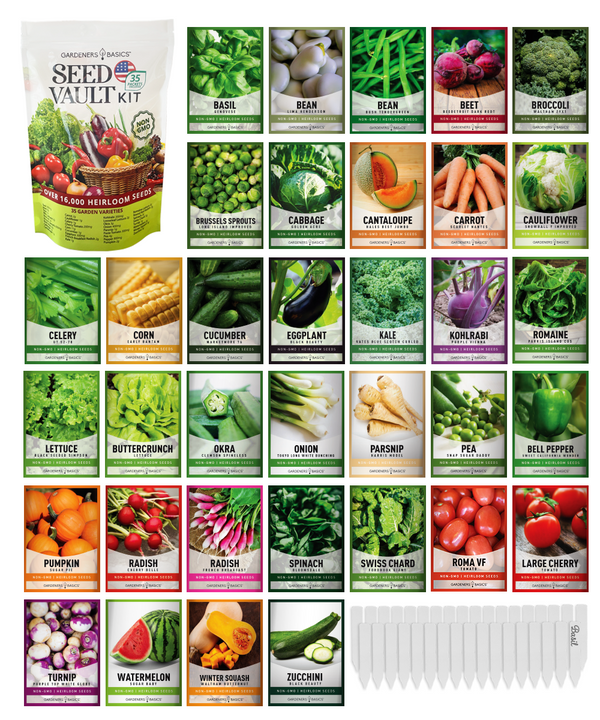
$29.95
$49.95
Ultimate Survival Seed Vault: 16,000+ Non-GMO Heirloom Vegetable Seeds for Emergency Preparedness Introducing the Seed Vault Kit, your all-in-one solution for emergency preparedness and sustainable gardening. This premium seed kit contains over 16,000 non-GMO, Heirloom, Non-Hybrid, and Open Pollinated seeds,… read more
Growing Pole Beans
There are a few key factors to keep in mind when it comes to growing pole beans. These climbing beans offer many advantages with their tall vines, including maximized yield in limited gardening space.
Pole Bean Characteristics
Pole beans are characterized by their long vines reaching up to 10 feet tall. They require a support structure, such as trellises or stakes, to climb on. Unlike bush beans, which tend to have a compact growth habit, pole beans are climbers that need something to latch on to as they grow.
Trellis Systems and Spacing Requirements
One of the first considerations when growing pole beans is the type of trellis system. A sturdy trellis made of bamboo or wooden stakes with string or wire supports is ideal for supporting the climbing vines.
Regarding spacing, pole beans require approximately 4-6 inches between each seed or seedling. This allows enough room for the vines to climb and spread out without causing crowding or competition for resources.
Proper Care for Pole Beans
Pole beans thrive in well-draining soil that is rich in organic matter. Before planting, it's important to prepare the soil by incorporating compost or well-rotted manure for added nutrients.
Regular watering is crucial for pole beans, especially during hot and dry periods. Consistent moisture helps promote healthy growth and prevents stress-related issues. Watering deeply is advisable, ensuring the moisture reaches the root zone.
Tips for Maximizing Yield
Regular harvesting is key to maximizing the yield of your pole beans. By picking the beans when they are young and tender, you encourage the plant to continue producing more pods.
Additionally, regular checks for pests and diseases are important. Common pests for pole beans include aphids and bean beetles, while fungal diseases like powdery mildew can affect their foliage. Early detection and appropriate treatments, such as organic insecticides or fungicides, can help protect your crop.
Purchasing Contender Bean Seeds
When it comes to growing healthy and productive Contender Beans, the quality of the seeds you start with plays a crucial role. At [Heirloom Seeds Store], we understand the importance of sourcing high-quality bean seeds and take great care to provide gardeners with the best varieties available. Our selection of Contender Bean seeds includes bush and pole varieties, ensuring you have options to suit your gardening preferences.
By choosing our Contender Bean seeds, you can have confidence in the pedigree and germination rate of the seeds, setting you up for a successful bean-growing season. Our seeds are carefully chosen and tested to ensure viability, resulting in strong and vigorous plants.
When you purchase Contender Bean seeds from [Heirloom Seeds Store], you can expect:
- Top-quality seeds from trusted suppliers
- A wide selection of Contender Bean varieties
- Seeds with high germination rates
- Expert guidance and support from our experienced team
| Benefits of Purchasing Contender Bean Seeds from Gardeners Basics |
|---|
| 1. Quality Assurance |
| Our Contender Bean seeds are sourced from reputable suppliers, ensuring that you receive the highest quality seeds. |
| 2. Wide Selection |
| We offer a variety of Contender Bean seeds, including bush and pole varieties, allowing you to choose the best option for your garden. |
| 3. High Germination Rates |
| Our seeds have been tested for germination to ensure a high success rate, giving you the best chance for a bountiful harvest. |
| 4. Expert Guidance |
| Our knowledgeable team is available to answer any questions about growing Contender Beans and provide tailored advice for your gardening needs. |
When you invest in high-quality Contender Bean seeds, you are laying the foundation for a successful and rewarding vegetable garden. Whether you prefer bush or pole varieties, [Heirloom Seeds Store] is your trusted source for Contender Bean seeds that consistently deliver exceptional results.
Incorporating Contender Beans into Your Vegetable Garden
As a gardener, it's essential to understand how to incorporate Contender Beans into your vegetable garden for a successful and thriving harvest. Following these simple tips ensures that your Contender Beans will thrive alongside your other vegetable crops.
Companion Planting
Companion planting is a gardening technique where two or more plant varieties are grown together to benefit each other. When it comes to Contender Beans have a symbiotic relationship with certain plants that can help enhance their growth and deter pests.
One excellent companion plant for Contender Beans is corn. The tall stalks of corn provide a natural trellis for pole beans, allowing them to grow vertically and saving valuable garden space. In return, the beans help fix nitrogen in the soil, which benefits the corn's nutrient needs.
Another great companion for Contender Beans is marigold. Marigolds repel harmful pests and insects, providing a natural defense for your bean plants. Plant marigolds in between your bean rows to create a barrier against pests.
Crop Rotation
Crop rotation is crucial in vegetable gardening as it helps prevent soil depletion, control pests and diseases, and maximize crop yields. To incorporate Contender Beans into your crop rotation plan, it's important to know that beans are part of the legume family, which fixes nitrogen in the soil.
By planting Contender Beans in a different bed or area of your garden each year, you can improve the soil fertility for other crops. This rotation helps break pest and disease cycles specific to beans and ensures a more balanced and healthy garden ecosystem.
Maintaining Soil Fertility
Like other plants, contender Beans require the right soil conditions to thrive. Maintaining soil fertility is essential for healthy bean growth and a bountiful harvest. Regularly enriching your garden soil with organic matter, such as compost or well-rotted manure, will provide the necessary nutrients for your beans.
Incorporating organic matter into the soil before planting Contender Beans will improve soil structure, water retention, and nutrient availability. Add compost or organic matter a few weeks before planting is recommended to give it time to break down and nourish the soil.
Remember to keep the soil moist but not waterlogged, as excessive moisture can promote disease and rot. Mulching around the base of your bean plants can help retain moisture, suppress weeds, and provide insulation to the soil.
By implementing these basics, you can ensure that your Contender Beans grow and thrive, providing you with a bountiful harvest year after year.
Next, in Section 8, I will summarize the key points discussed throughout the article and emphasize the versatility and benefits of growing Contender Beans, whether they are of the bush or pole variety.
| Companion Plants for Contender Beans | Benefits |
|---|---|
| Corn | Provides natural trellis support for pole beans Beans fix nitrogen in the soil, benefiting corn |
| Marigold | Repels pests and insects that harm bean plants |
Conclusion - Are Contender Beans Bush or Pole Varieties?
After exploring the characteristics and cultivation of Contender Beans, it is clear that they offer a versatile and rewarding addition to any vegetable garden. Whether bush beans or pole beans, both varieties showcase their unique advantages.
Bush beans are compact and require little maintenance. They are perfect for smaller spaces and beginner gardeners. Their bushy growth habit provides an abundant harvest in a shorter time frame. Plus, bush beans do not require a trellis, making them a convenient choice for gardeners with limited resources.
On the other hand, pole beans provide vertical growth and offer higher yields in the long run. These climbers require support such as trellises or stakes, allowing them to reach great heights and maximize the use of garden space. Pole beans are an excellent option for experienced gardeners with larger areas and a desire for increased productivity.
Regardless of the variety you choose, Contender Beans are known for their delicious taste, nutritional value, and adaptability to various growing conditions. Whether you have a small backyard garden or a sprawling plot, these beans will thrive and reward you with a bountiful harvest.
Seed Safe Survival Seed Kit - 35 Variety Pack
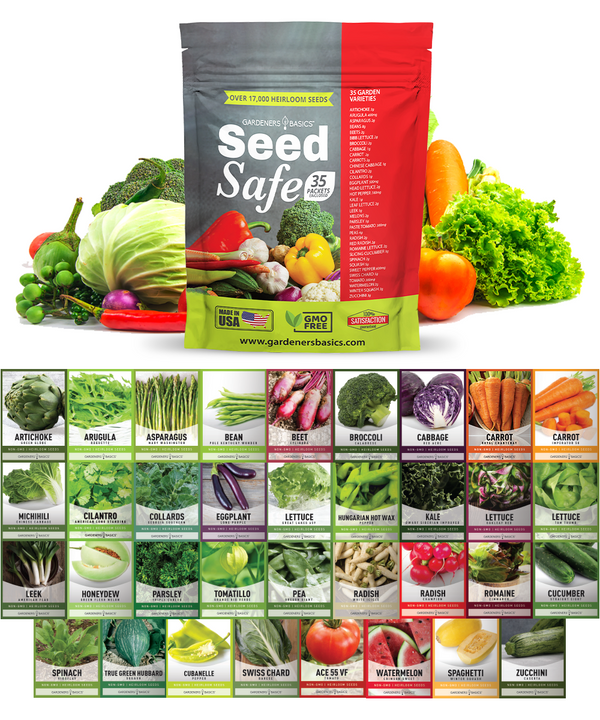
$29.95
$49.95
Seed Safe Survival Seed Kit: The Ultimate Heirloom Collection for Self-Sufficient Gardening Introducing the Seed Safe - 35 Varieties of Heirloom Vegetable, Herb, and Fruit Seeds, the ultimate solution for gardeners who want to secure a bountiful future harvest. This… read more
FAQ - Contender Bean Varieties
Are Contender beans bush or pole varieties?
Contender beans are bush varieties, meaning they grow in a compact, bushy manner without requiring support structures such as trellises or poles.
What is the difference between bush beans and pole beans?
Bush beans are typically compact and don't require support, while pole beans are vine plants that need trellises or poles to climb. Bush beans have a shorter harvest period, while pole beans produce beans continuously over a longer period.
What are the different varieties of Contender Beans available?
Contender Beans are available in various types, including Contender Bush Bean, Contender Improved Bush Bean, and Contender Wax Bean. Each variety has unique characteristics and flavors.
How do I grow bush beans?
To grow bush beans, prepare well-drained soil, plant the seeds directly in the ground after the danger of frost has passed, space them about 2-4 inches apart, provide adequate watering, and remove weeds regularly. Harvest the beans when they are firm and fully developed.
How do I grow pole beans?
For growing pole beans, create a trellis or pole structure, plant the seeds close to the support system, water regularly, and train the vines to climb. Harvest the beans when they are tender and before they become too mature.
Where can I purchase Contender Bean seeds?
You can purchase Contender Bean seeds from reputable seed stores, such as the XYZ Heirloom Seeds, which offer high-quality seeds for home gardeners.
How can I incorporate Contender Beans into my vegetable garden?
You can incorporate Contender Beans into your vegetable garden by planting them alongside compatible companions, practicing crop rotation, and maintaining soil fertility through proper fertilization and organic mulching.
Why should I choose Contender Beans for my garden?
Contender Beans, whether bush or pole varieties are known for their excellent flavor, high yield potential, and ease of cultivation. They are versatile, nutritious, and delicious to any home garden.



